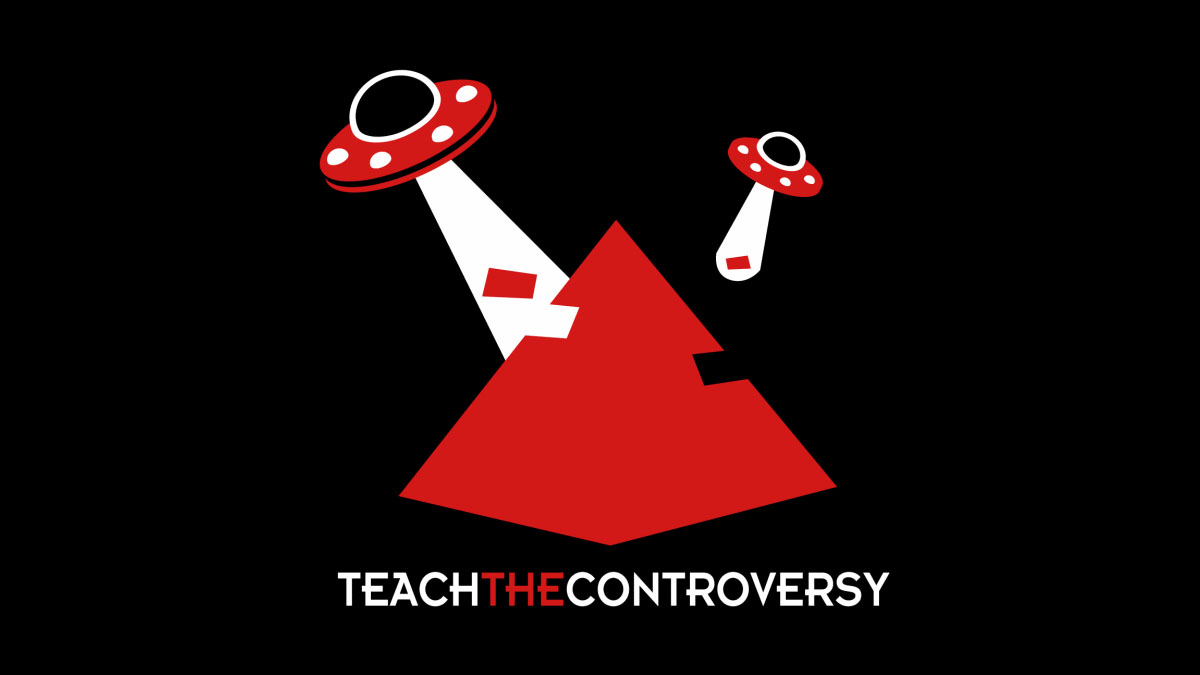when von daniken’s disciples leave a comment

Seems like I can’t resist from pointing out some really bad commentary from readers this week, maybe since the comments in question are almost textbook examples of bad logic for a particular argument in dire need of some skepticism. Last time, we had a creationist troll just asking questions, and now, we have a very angry ancient astronaut theorist trying to take me to task for pointing out that even if humans and aliens shared an extremely distant ancestor via the process of panspermia billions of years ago, our genomes would be way too different for any cross-breeding or hybridization experiments by virtue of evolution. But apparently, just by looking into the mechanisms of genetic mutations and simple astrobiology, and taking a skeptical stance on the issue based on the evidence, I’m a close-minded arrogant jackass who just needs to think outside the box, damn it! Or in his own words, excerpted and slightly cleaned up for readability…
How moronic are you, really? Yes we evolved by evolution, I’m not disputing that, but to go on and say that a species of Neanderthals that were probably eating their own feces, virtually overnight, became more intelligent, and had the advanced knowledge to know how to construct all the great monuments of the world. And even we, the “human race,” can’t even accomplish these things in today’s modern world.
One of the two mistakes adherents of ancient astronaut theories make is losing a sense of timescales when talking about the ancient world. Modern humans evolved just over 100,000 years ago as several different and competing species, some of which consolidated through hybridization while the others went extinct. The very foundations of civilization as we know it were being laid down around 6000 BC and the kind of big monument building we consider some of the greatest achievements of the ancient world were being raised some 3,000 years after that. The notion of humans going to sleep in caves while using primitive grunting to communicate with each other, then waking up, singing an ode to the wonders of the universe and going out to build a brand new pyramid and Stonehenge before supper, simply won’t apply here. We had thousands of years to learn, to experiment, and to build societies to a point where we actually were interested in building monuments or city states to protect our resources and commercial interests. And in the archeological record, there are plenty of little experiments which seem to set the stage for more and more monument building in the future, such as a whole number of small but growing wood and stone circles around sites sacred to Neolithic Britons.
It’s also perplexing that we couldn’t replicate the ancients’ efforts today. Have you ever been to Las Vegas and seen the Luxor casino? It’s about thirty stories tall, houses an entire hotel and entertainment complex inside, and shines a piercing beam of light visible from over a hundred miles away. We just used it for entertainment and business rather than as a religious monument to house a small maze of rooms and built out of slabs of rock, so it’s easy to overlook that we’ve created our own Great Pyramid as a cheap tourist attraction. Also, can someone point me to any ancient civilization able to build something on par with Taipei 101, or the Petronas Towers, or the Burj Khalifa? Some of today’s most ambitious architectural projects would be impossible in a world without robots or factories, and we build in years, not over decades, if not generations, which were the typical timelines for many ancient monuments. During the popularization of a number of ancient sites during the 19th century, arrogant Victorians could not help but keep repeating how amazed they were that “primitive savages” of the feral past ever built something impressive, blithely ignoring the fact that the ancients and we share the same kind of brainpower. I suppose their arrogance is now imprinted in our pop culture.
Look, if we can genetically alter sheep’s DNA, and a make a fucking clone of it, and if we can take an egg out of a woman, and take the sperm out of a man, and genetically splice the two together and replace it back into the woman’s womb, so she can have a child, then what makes you think it’s so impossible that ancient aliens didn’t do the exact same thing?
And here’s the second mistake ancient astronaut believers tend to make all the time. Just because it may be plausible doesn’t mean that it happened or that it has a high probability of happening. When it comes to alien visits to our little planet, I’ve consistently said the same thing. There is a nonzero probability of life arising on other worlds orbiting other stars, and in some cases the star might not even be required for long. There is a nonzero chance that by sheer number of times life arises, at least some aliens will evolve intelligence, build spacecraft, and start exploring the cosmos. But the odds of us and another intelligent species which has the craft able to reach our world, nearly magical gene splicing technology, and an interest in meddling with us as a growing species in the primeval past are astronomically small, small enough to all but disregard. Show me actual proof of alien meddling with our genomes and present me with a flying saucer or an alien mummy our ancestors buried at a sacred site thousands of years ago, and I’ll shake your hand and without the slightest hint of sarcasm or jest ask if I could get a preview of your Nobel Prize acceptance speech. Until then, I will be filing the ideas of ancient astronauts in a bin labeled “plausible but really, really, really unlikely.”





